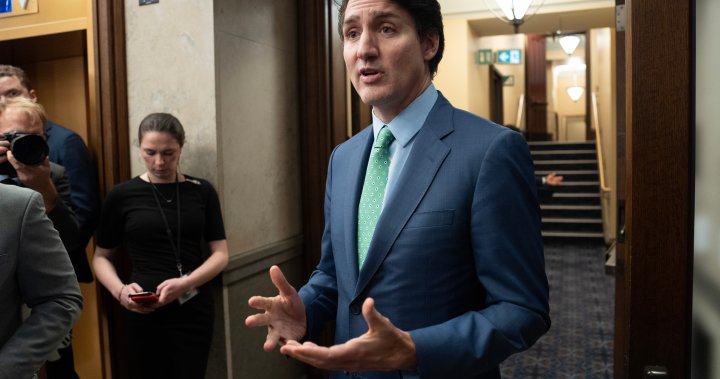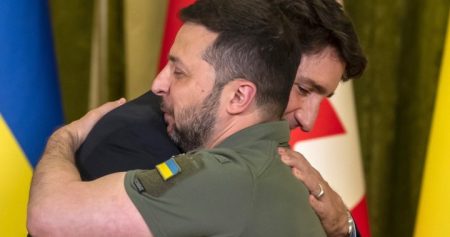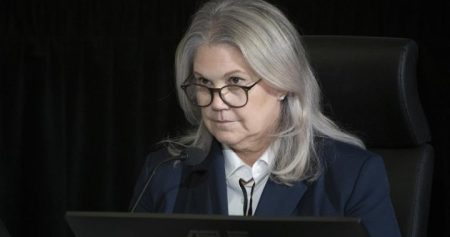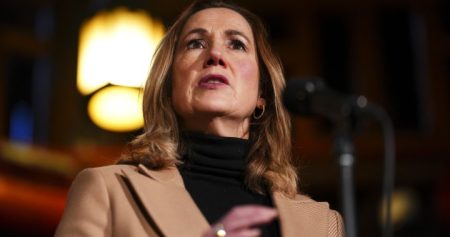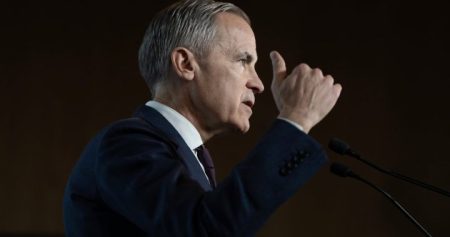Canada Prepares for Potential U.S. Tariffs Under Trump Presidency
Canadian Prime Minister Justin Trudeau convened a meeting with provincial premiers to discuss the looming threat of tariffs proposed by then U.S. President-elect Donald Trump. The meeting aimed to solidify a national strategy for border security and formulate a response to potential trade actions. Public Safety Minister Dominic LeBlanc revealed that the federal government had presented a comprehensive border security plan, incorporating feedback from the premiers. This plan, to be shared with the incoming Trump administration and the Canadian public, was designed to address concerns raised by Trump regarding illegal migration and fentanyl trafficking. While the specifics of the plan, including increased spending and potential legislation, were yet to be finalized, LeBlanc emphasized the collaborative spirit of the meeting, with several premiers pledging provincial resources to bolster border enforcement alongside the RCMP and CBSA.
Ontario Premier Doug Ford expressed satisfaction with the federal government’s response to his specific requests for increased border security resources and data sharing on fentanyl origination from Health Canada. He emphasized the need for swift implementation of the proposed plan. The urgency stems from Trump’s explicit threat of tariffs on Canadian imports unless concerns about illegal migration and drug trafficking are addressed. Although Canada’s contribution to these issues is relatively small compared to Mexico, Trump’s stance exposed vulnerabilities in Canada’s border security, prompting calls for action from both provincial leaders and police unions.
Deputy Prime Minister Chrystia Freeland, co-chair of the cabinet committee on U.S. relations, highlighted the premiers’ strong support for a robust Canadian response to any unjustified tariffs. She cited critical minerals and metals, essential to the U.S., as potential leverage in trade negotiations. While emphasizing the need for a united front, Freeland refrained from speculating on the inevitability of tariffs, stressing ongoing dialogue with American counterparts. Premier Ford, however, expressed a sense of inevitability about the impending tariffs and advocated for retaliatory measures, including the potential disruption of energy supply to certain U.S. states. Freeland, while acknowledging the seriousness of the situation, maintained a focus on diplomatic engagement with the U.S.
The meeting also underscored the "Team Canada" approach, with premiers actively engaging with U.S. officials and media. Alberta Premier Danielle Smith, for instance, met with U.S. governors to advocate against tariffs on Canadian energy, while both Smith and Ford leveraged U.S. media platforms to highlight the potential negative impact of tariffs on American consumers. This concerted effort reflected a collective resolve to protect Canadian interests in the face of potential trade disputes. The timing of the meeting was significant, coming on the heels of Trump’s public jabs at Trudeau, further emphasizing the strained relationship between the two countries.
As Canadian lawmakers prepared for their winter break, the impending presidential inauguration loomed large, adding to the urgency of the situation. Trudeau expressed his anticipation for further collaboration, emphasizing the importance of diverse perspectives in safeguarding Canadian interests. However, the political landscape added another layer of complexity. NDP Leader Jagmeet Singh criticized the mixed messages from some conservative premiers, calling for a unified and strong stance against Trump, whom he labeled a bully. This divergence in political approaches reflected the challenges in presenting a united front amidst domestic political considerations.
Conservative Leader Pierre Poilievre, while acknowledging the negative implications of tariffs for both countries, also criticized Trudeau’s leadership, further complicating the narrative. This internal political dynamic underscored the delicate balancing act Trudeau faced in navigating both domestic politics and international relations, particularly in the context of a potentially volatile trade relationship with the incoming U.S. administration. The meeting served as a critical platform for aligning federal and provincial strategies, emphasizing collaboration and preparedness in the face of potential economic challenges. The ultimate goal was to ensure a coordinated and effective response to protect Canadian interests while maintaining crucial economic ties with the United States.




